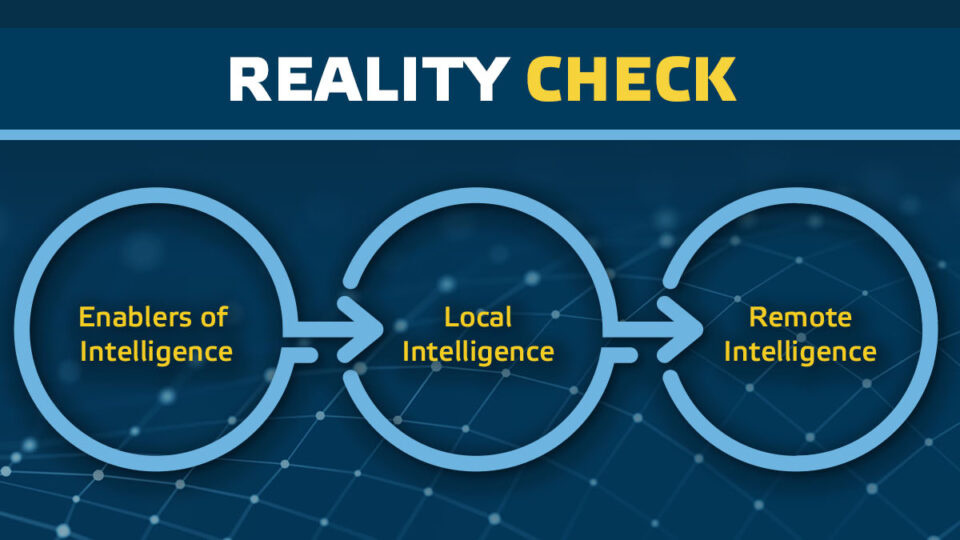
Intelligent Networks: Your questions answered
The end of 2022 marked an incredible milestone for us: More than one million devices have now left the Littoinen factory with built-in Intelligent Networks technology or remote control or monitoring enabled. Excited to hit the record, we have collected below answers to some of the most frequently asked questions about the Intelligent Networks technology. How does it work, what is incorporated in the concept and why should operators focus on it? Find out below!
- What is the key concept about Intelligent networks, and why is it so important?
Intelligent optical nodes and amplifiers are 24/7 probes in the cable network. They do not make predictive maintenance tools and full-capture cable modems useless, rather they complement them. As RF impairments can and do occur sporadically based upon environmental, electrical, and mechanical issues that impact customer experience and contribute to churn, intelligent devices can transmit your NOC personnel all possible data needed to address the issues and guide network technicians. - Is Intelligent Networks technology complex and difficult to use?
Intelligence does not mean complexity, it means ‘aware and automatic’. Intelligent network technology is developed to make operating networks easier for operators: more service uptime can be achieved with less work. - Why does Intelligent Networks technology make sense from a business perspective?
As studies have shown, network problems initiate a journey that leads to churn if dissatisfaction with services is fostered by negative interactions with the helpdesk. To provide excellent customer experience, it is of utmost importance that the helpdesk has real-time information about what is ongoing in the network and can help and advise subscribers in the best possible way. - Why is operational efficiency a key focus for operators and how can Intelligent Networks help improve it?
Increasing operational efficiency can bring significant monetary and business benefits in terms of costs and time savings. In addition, it can result in better experience for the end-customers, which typically lowers churn figures. - How does network intelligence help streamline operations (i.e., lower helpdesk volume, fewer truck rolls and, etc.)?
According to our study in Europe, several benefits can be achieved through network intelligence: A: 100% of seasonal maintenance visits can be avoided. B: 30% of all customer calls can be avoided because of preventive actions and improved network reliability. C: Up to 60% of truck rolls can be reduced D: Ingress and CPD problems are repaired 30 minutes faster on average. E: Severe node area breaks are 150 minutes shorter on average. - Intelligent Networks technology promises energy-savings. Why is this so important today?
As the complexity of network devices is growing, alongside investments in higher-frequency technologies, so too is the amount of power the networks consume. New solutions are needed to help operators manage the power and performance growth in ways that help keep energy bills in control, provide improved services for customers and benefit the environment. - How do intelligent network devices help us reduce energy use and costs?
Although broadband nodes and amplifiers are designed and operated to fulfil their specifications at the full load, this scenario is rare in real networks. When the maximum load does not exist, the idea is to use a lower bias current in intelligent network devices, which then leads to lower power consumption and causes no sacrifices in the quality of services to subscribers. Therefore, significant cost improvements can be achieved by making nodes and amplifiers capable of adapting to external changes. - Why is it important to reduce seasonal maintenance visits and network maintenance repair time and how does Intelligent Networks make this easier?
Seasonal maintenance visits are expensive to carry out and service disruptions, caused by the maintenance breaks, may cause churn. Intelligent devices perform automatic operations and adjustments that can be carried out in less time and with lower operational costs and greater precision compared to manual work in the field. Many operators have also utilised these features during large upgrades, when skilled CATV field technicians wear thin, and deadlines are getting closer. In practice, even non-CATV experts can install intelligent optical nodes and amplifiers. - How can we leverage the benefits of network intelligence to reduce overall costs and improve margins?
Teleste has adopted the Intelligent Networks technology to broadband nodes and amplifiers and their management software, which enables taking full benefit of the intelligent features. Our intelligent devices can be deployed to any cable television network, without need for changes in the network infrastructure, and we also have a product line designed for North American cable broadband requirements. - What do you mean by saying that intelligent devices have no plug-ins?
In our intelligent devices, built-in electrical controls replace traditional plug-in modules. Many automatic features are enabled by them, and they also eliminate all logistic hassles on site as changing plug-ins is no longer necessary. - Is Intelligent Networks technology expensive?
Intelligent network technology is commonly believed to be expensive. When comparing the total cost of ownership of intelligent network devices to the traditional ones, you notice that this is not true in real life. The savings in operational and lifetime costs clearly compensate the possibly higher initial prices. - Are intelligent devices available in North America?
Intelligent nodes and amplifiers in our ICON product family are designed especially for the North American cable broadband market and its requirements and local conditions. They are available through our US-based joint venture Teleste Intercept. - Does the upcoming Extended Spectrum DOCSIS (ESD) technology affect the Intelligent Networks concept?
Intelligent devices will be needed to improve operational efficiency even when networks become 1.8 GHz. In Distributed Access architectures, remote PHY devices will replace the broadband nodes but in the big picture, the concept of network intelligence won’t change in the ESD networks.




